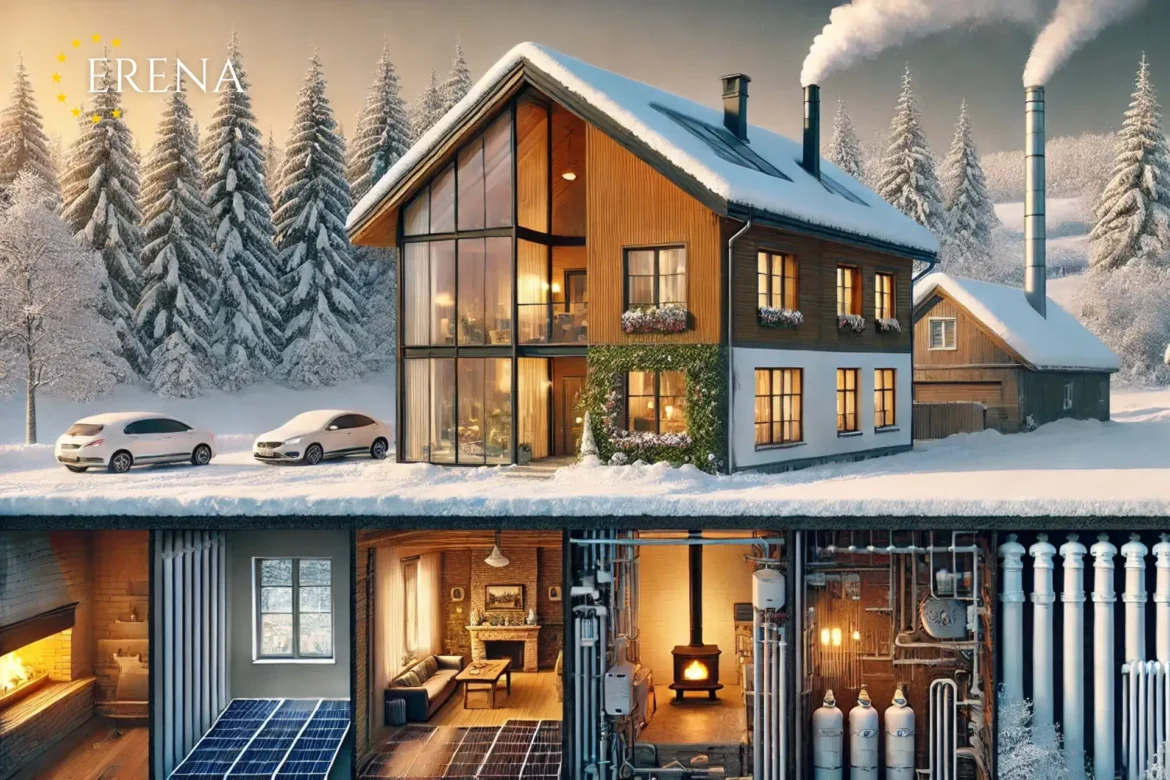Heating in winter is a crucial aspect of comfort and safety across Europe. Different countries employ various heating methods depending on climate, available resources, and national energy policies. This overview highlights the main heating methods and their characteristics in different regions of Europe.
Germany
Germany, as one of Europe’s leading economies, is at the forefront of renewable energy adoption. However, traditional heating methods still play a significant role:
• Natural Gas: Gas boilers remain the primary source of heating in homes. Most buildings are connected to centralized gas networks.
• Renewable Sources: Solar panels and heat pumps are gaining popularity, especially in energy-efficient homes and new buildings.
• Solid Fuels: Firewood and pellets are commonly used in rural areas.
• District Heating: Cities rely on district heating systems that can run on gas, coal, or biofuels.
The government promotes a transition to eco-friendly technologies through subsidies and tax incentives.
France
In France, heating remains essential during winter, particularly in the northern regions. The primary sources include:
• Electricity: France’s extensive nuclear energy production makes electric heating popular and relatively affordable.
• Natural Gas: Widely used in urban homes connected to gas networks.
• Renewable Energy: Heat pumps and solar collectors are increasingly installed in new buildings.
• Wood and Biomass: Fireplaces and stoves are still prevalent in rural areas.
The government actively invests in energy efficiency projects.
United Kingdom
In the United Kingdom, winters are mild but damp, making heating necessary year-round. Key methods include:
• Natural Gas: Over 80% of homes use gas boilers, making it the dominant source.
• Electricity: Used in areas without gas access. Heat pumps are gaining traction.
• Solid Fuels: Coal and firewood remain relevant for older buildings and rural areas.
The UK plans to phase out gas boilers in new homes by 2025, emphasizing eco-friendly technologies.
Italy
Italy’s climate ranges from mild in the south to harsh in the north, influencing heating choices:
• Gas: Natural gas is the primary source in northern regions.
• Electricity: Commonly used in the south during colder months.
• Solid Fuels: Wood stoves and fireplaces are popular in rural areas.
• Solar Collectors: Widely used for water heating due to sunny conditions.
Italy promotes energy efficiency programs with financial support for upgrading heating systems.
Scandinavian Countries (Sweden, Norway, Finland, Denmark)
Harsh winters in Scandinavia demand highly efficient heating systems. Main approaches include:
• District Heating: In cities, district heating networks powered by biomass or waste provide warmth.
• Electricity: Hydroelectricity makes electric heating common, particularly in Norway and Sweden.
• Heat Pumps: These energy-efficient and eco-friendly systems are widespread in both private homes and public buildings.
• Solid Fuels: Wood-burning stoves are popular in rural areas.
Scandinavia leads in adopting sustainable heating technologies.
Poland
Poland faces cold winters and has historically relied on coal:
• Coal: Once the main source of energy, its use is gradually decreasing.
• Natural Gas: Increasingly used in urban homes.
• Solid Fuels: Firewood stoves are common in rural areas.
• Renewable Energy: Heat pumps and solar panels are emerging but still account for a small share.
Poland is working to modernize its energy infrastructure, though progress is slow due to economic and social factors.
Spain
Winters in Spain are mild, except in northern and central regions, where temperatures can drop below freezing:
• Electricity: The main heating source in southern regions.
• Natural Gas: Used in northern and central parts of the country.
• Solid Fuels: Firewood and biomass are common in rural areas.
• Solar Panels: Favorable climate conditions make them a popular choice.
Government programs aim to improve energy efficiency, particularly in older buildings.
Eastern Europe (Czech Republic, Slovakia, Hungary, Romania)
Cold winters in Eastern Europe require reliable heating systems. Main sources include:
• Natural Gas: Predominant in urban areas.
• Coal and Firewood: Widely used in rural areas and older homes.
• Renewable Energy: Slowly developing, but heat pumps and solar panels are being introduced.
• District Heating: Centralized heating remains key in larger cities.
Conclusion
Europe demonstrates a wide variety of approaches to winter heating. While some countries rely on traditional energy sources, others are embracing eco-friendly technologies. The overall trend is clear: increasing energy efficiency and reducing the carbon footprint. In the coming years, the adoption of renewable energy sources is expected to grow, making heating in Europe more sustainable and environmentally friendly.
How Europe Heats Homes in Winter: A Detailed Overview of Key Countries
519

